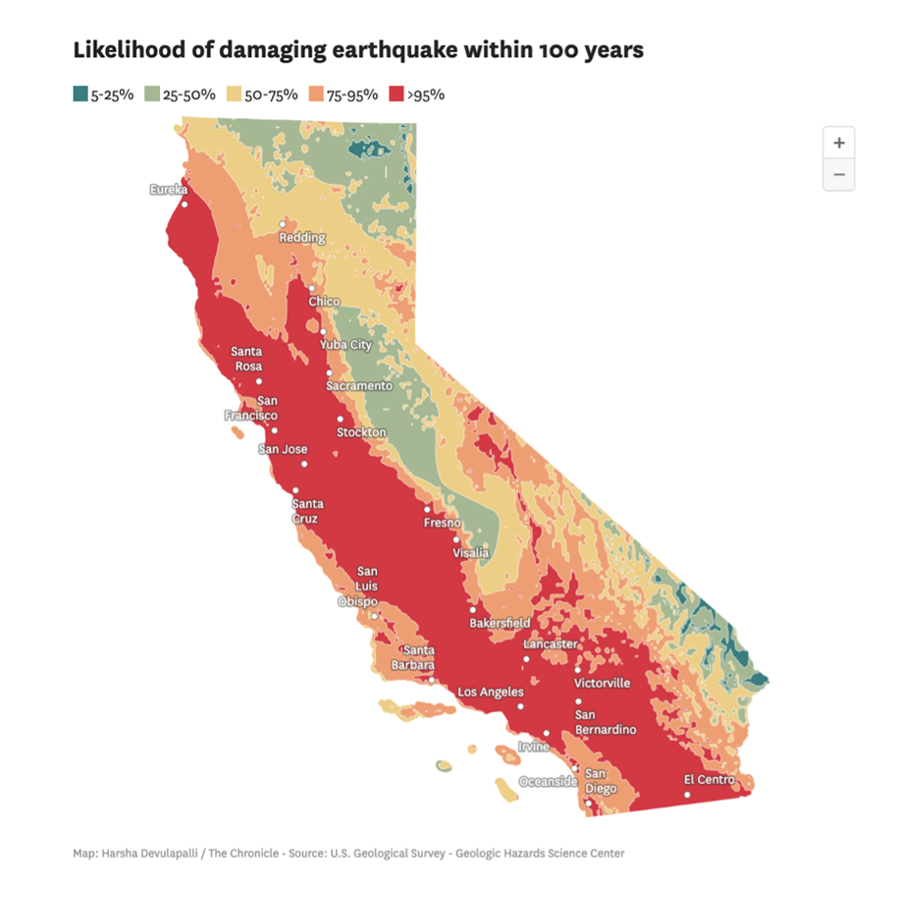Unveiling the Growing Risk of Natural Disasters
We hear regularly about the rise in natural disaster risk across the globe. From volcanoes in Iceland to wildfire in Hawaii and Hurricanes in the Caribbean, more people live in areas targeted by Mother Nature than ever. Just last month, the USGS released its updated National Seismic Hazard Model (NSHM) and the findings show that nearly 75 percent of the U.S. could experience damaging earthquake shaking in the next 100 years.
The model was set up to generate a color-coded map identifying areas most prone to destructive earthquakes, drawing on findings from seismic research, historical geological information, and the newest data-gathering technologies.
If we concentrate on California, the map shows a vast swath of high-risk areas across the state that have a likelihood of a damaging earthquake over the next 100 years.

There is greater shaking possible in California than previously mapped. Compared with the prior model, done in 2018, California locations had up to a 10% increase in the chances of experiencing a damaging earthquake. The new data also marks the chances of a 7.0 magnitude earthquake being 80% greater statewide than noted in 2018.
As reported by the USGS, key findings from the updated seismic hazard model include:
- Risk to People: Nearly 75% of the U.S. could experience potentially damaging earthquakes and intense ground shaking, putting hundreds of millions of people at risk.
- Widespread Hazard: 37 U.S. states have experienced earthquakes exceeding magnitude 5 during the last 200 years, highlighting a long history of seismic activity across this country.
- Structural Implications: The updated model will inform the future of building and structural design, offering critical insights for architects, engineers, and policymakers on how structures are planned and constructed across the U.S.
- Unified Approach: This marks the first National Seismic Hazard Model to encompass all 50 states simultaneously, reflecting a massive collaborative effort with federal, state, and local partners.
- Not a Prediction: No one can predict earthquakes. However, by investigating faults and past quakes, scientists can better assess the likelihood of future earthquakes and how intense their shaking might be.
Given the increased risk outlined by the USGS, securing your home against earthquakes physically and financially is critical. Planning requires careful and intentional measures. Although it may feel daunting at first, implementing strategies for your household, like anchoring large furniture or securing toxic substances, can significantly lower hazards and ensure peace of mind. Safety is about being proactive well in advance. Ensuring you have appropriate insurance coverage is a crucial aspect of this preparedness. Did you know that standard Homeowners policies do not cover earthquake damage?
GeoVera stands out as the leading provider of residential earthquake insurance, offering to bridge the gap in earthquake coverage. Make sure to quote each of your clients to find the most suitable policy for their needs. It takes just a few seconds to enter the property address and Coverage A amount to get a quote.
